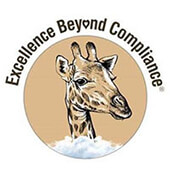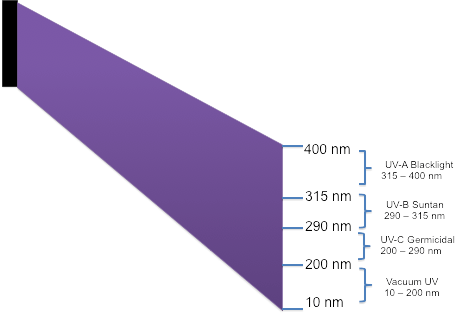Academy Contributors
 Getting Better All the Time:
Four Years of Continuously Improving in Our Mission to Serve Animals, Their Interests, and Their Well-being Getting Better All the Time:
Four Years of Continuously Improving in Our Mission to Serve Animals, Their Interests, and Their Well-being
By James F. Gesualdi
To keep ahead, each one of us, no matter what our task, must search for new and better methods—for even that which we now do well must be done better tomorrow.
—James F. Bell
Do not go where the path may lead, go instead where there is no path and leave a trail.
—Ralph Waldo Emerson
A special note of thanks: This is my 30th year of practicing animal law and working within the zoological world to serve animals, their interests, and their well-being—and this also marks 4 years of contributing this column. As always, thank you for reading, challenging me to keep growing and improving, and for the good efforts you put forth daily to serve, protect, and save animals, as we also seek to compassionately reach hearts and minds to further our mission to make a difference for animals, people, and our planet.
This column and the entire newsletter are made possible by the outstanding, dedicated, and skillful work of a team of caring professionals behind the scenes. Each month they review, comment upon, and edit this column, which then goes out to the world in much better form than when it left my desk.
Though we're not responsible for where we come from, we are responsible for where we go. We are more than just our conditioning. We are capable of growth and change.
—Tyler Henry
This wholly unexpected journey of mine began in 1989, when I was fortunate to join a group of cancer patients and survivors spending a week with dolphins at the Dolphin Research Center in the Florida Keys. The people in the group truly humbled me and put the "stresses" of my professional life in perspective. The dolphins, particularly one named Little Bit—the last surviving dolphin from the Flipper television series—also inspired me. The experiences of that week changed me and my life, and started me on the road that led me here.
Upon returning from that transformational adventure, and just as I started to embark upon substantial pro bono-related animal work, I began a new course of study. Wanting to understand why some might criticize the sort of moments that had just turned my life in an exciting new direction, I threw myself into reading the animal rights literature. That brought me to getting involved in what is now considered "animal law," primarily through various bar associations, some thought-leading programs, and teaching animal law in law school. Eventually, various leadership and other unique opportunities arose. Over the years, my involvement in animal law and openness to learning from different perspectives changed me and my life. Living and working in these different worlds or communities, just like we all do in our lives and work, has made me a better person and a more effective legal professional and mentor.
The personal and professional growth continues, as I remain one who struggles through ongoing daily challenges that, over time, seem to make me better, at least when approached constructively. These experiences have somehow fueled exhaustive work regarding the Animal Welfare Act, and proactive endeavors like this column, in order to share hard-learned lessons from living in different worlds and applying that understanding.
Over the years, as different challenges have arisen or seemed likely, self-directed study has extended to areas outside of the Animal Kingdom. This is something we all can and should do. Those other subjects have included organizational change and culture, growing through adversity, learning from criticism, simply getting better, and much more
For the last four years, this column has changed me and my life for the better. On a regular basis, it makes me focus on what is happening, what is coming after that, and the constructive application of the lessons learned from helping zoological organizations through difficult challenges and even crises. Your comments and feedback teach me even more. Some ideas don't work out as well everywhere. Even good ideas can be improved.
Living in two different worlds, we all love and respect animals, and some of us manifest that love and respect differently. When we also treat each other with greater compassion, dignity, and respect, we can find new ways to engage in conversation and constructive action on behalf of animals.
Thanks to the Academy for being a 24/7/365 source for knowledge and ideas to further elevate and professionalize the zoological community, as we all learn and grow together in our service on behalf of animals.
In the time we have, it is surely our duty to do all the good we can to all the people we can in all the ways we can.
—William Barclay
© 2019 James F. Gesualdi, P.C. The opinions expressed herein are solely those of the author. This is not, nor should it be construed as, legal advice.
For more information on Excellence Beyond Compliance®, visit excellencebeyondcompliance.com.
 Something Fishy Is Going On Something Fishy Is Going On
By Dr. Rob Jones, "The Aquarium Vet"
Ultraviolet Radiation and Its Use in Aquarium Systems
There are two main agents used for water sterilization and pathogen reduction in aquarium and zoo systems. The first is ultraviolet (UV) radiation and the second is ozone. An advantage of UV is the lack of any toxic residuals compared to ozone.
There are two means of transmission of pathogens: horizontal and vertical. Horizontal refers to the transmission of a pathogen within a generation, i.e. from one fish to another, whereas vertical transmission refers to transmission from one generation to another via eggs or semen. Horizontal transmission mainly occurs through the water, although hands and nets can be other important ways of spreading disease. We are considering horizontal transmission when we are discussing UV and ozone.
Louis Pasteur (1822-1895) first recognized that sunlight was germicidal. However, it was not until 1893 that Marshall Ward showed that it was UV radiation that was the cause of this phenomenon.
UV radiation forms part of the electromagnetic spectrum. UV radiation has a spectrum wavelength of 10 to 400 nm. Within the UV spectrum, there are several subgroups (see figure below):

- UV type A: spectrum range of 315 to 400 nm; is normal UV light or blacklight
- UV type B: spectrum range of 290 to 315 nm; usually associated with suntanning and the skin's formation of Vitamin D
- UV type C: spectrum range of 200 to 290 nm; is germicidal and used for disinfection
- UV Vacuum: spectrum range of 10 to 200 nm; although vacuum UV is germicidal, it rapidly dissipates in water and is therefore not practical for disinfection purposes
- *While UV-A and UV-B have some germicidal properties, we are mainly dealing with UV-C in this discussion. UV-C is largely blocked from reaching the Earth's surface by the ozone layer.
Effects of Ultraviolet Radiation
Ultraviolet (UV) radiation kills pathogens by inactivating the deoxyribonucleic acid (DNA) or ribonucleic acid (RNA) that is present within the nucleus of cells. This prevents the pathogens from multiplying and thus attacking a host (such as fish). DNA absorbs UV-C most effectively at the 260 nm wavelength. At the 280 nm wavelength, some UV is absorbed into the aromatic rings of some amino acids, which damages proteins within the cells. This will also have a negative effect on the cells and cause cell death. The effect of UV-C is different from chemical disinfectants, which generally act only by damaging cell structures like the cell wall and interfering with the pathogen's metabolism.
Next month, we will look at UV production and its use in aquariums and zoos for water quality management.
I will be attending the Regional Aquatics Workshop (RAW) in Columbus, Ohio on May 13, and I look forward to meeting students and prospective students of the e-quarist course.
E-quarist™ Courses—Academy Subscriber Special!
The San Diego Zoo Global Academy is excited to share an additional Academy subscriber benefit regarding our collaboration with The Aquarium Vet: as an Academy subscriber, you are now entitled to a discount on the e-quarist™ courses. We are also happy to offer one of our free monthly webinars.
For more information about the SDZGA discount, or anything about the e-quarist™ course, including next month's free webinar, please contact katrina@theaquariumvet.com |